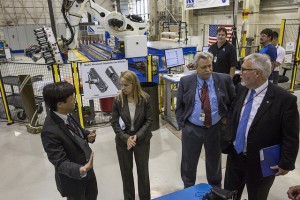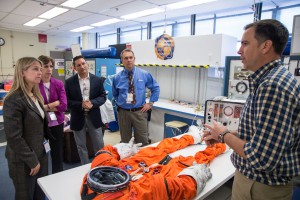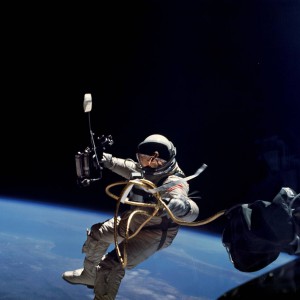Even at a place like NASA, where our hardworking women and men are accustomed to reaching new heights, last week was special. It seemed like our entire country was taken with the dazzling new images of Pluto that were sent to us from billions of miles away by New Horizons.
After 3 billion miles and more than 9 years in space, New Horizons became the longest duration mission ever to reach its science target, and because of this, we’ve been able to receive the most detailed-close-up images and measurements of Pluto ever. For our country, this means that we are the first nation to reach Pluto, and we are the only nation to have completed an initial survey of our solar system. Our science and engineering exploration efforts represent remarkable new opportunities for learning, understanding, and innovating.
New Horizons truly was a team effort – an effort that spanned multiple states and sectors.
Many of the talented team members that made this mission possible work at NASA’s Ames Research Center, and I had the opportunity to meet with several of them last week, during my “homecoming” to Ames. I say homecoming because I spent every summer from 1989 through 1992 at Ames performing my Ph.D. research on Extravehicular Activity and new technologies to allow for mobile spacewalks.
In addition to meeting with some very dedicated members of the New Horizons team, I also met with folks who are innovating in all sorts of amazing ways. I was so impressed with the team at the NASA Advanced Supercomputing Facility and with all the cutting edge robotics research going on at Ames (I got to drive, but didn’t crash the planetary rover on a >40 downward slope!).
The work being performed at Ames on cutting-edge aeronautics research – including Unmanned Aircraft Systems, Air Traffic Management, and the unequalled Arcjet facility – is nothing short of remarkable.
I very much enjoyed meeting with the team at the National Full-Scale Aerodynamic Complex and the Air Traffic Management Lab, where I saw a demonstration of the Terminal Spacing and Sequencing tool. This could not be more important at a time when our skies are growing more crowded by the day. We like to emphasize that ‘NASA is with you when you fly.
Of course, the people of Ames are doing important work to advance NASA’s Journey to Mars. Their work on the Orion spacecraft and space life sciences are reasons that we’re closer to sending human beings to Mars than ever before in the history of science and exploration.
One of my heroes, Eleanor Roosevelt once said that the “future belongs to those who believe in the beauty of their dreams.” The women and men of NASA Ames clearly believe in the beauty of their dreams – and it shows. I’m very much looking forward to continuing to work with you and all of the NASA team as we continue to reach for new heights, to expand humanity’s presence into space, and to strengthen America’s leadership here on Earth.



